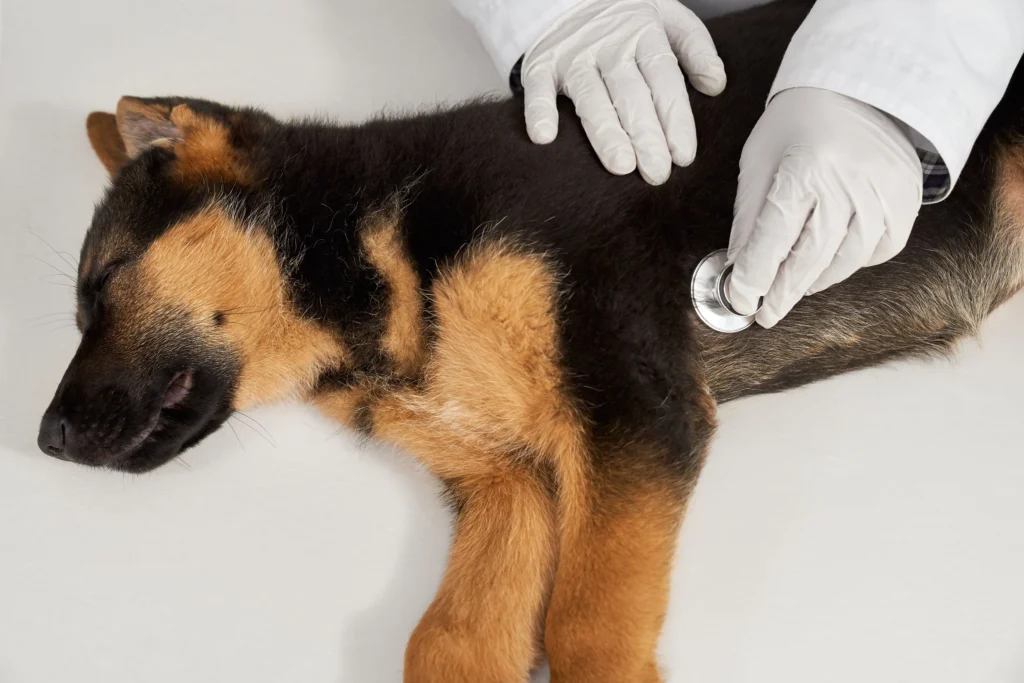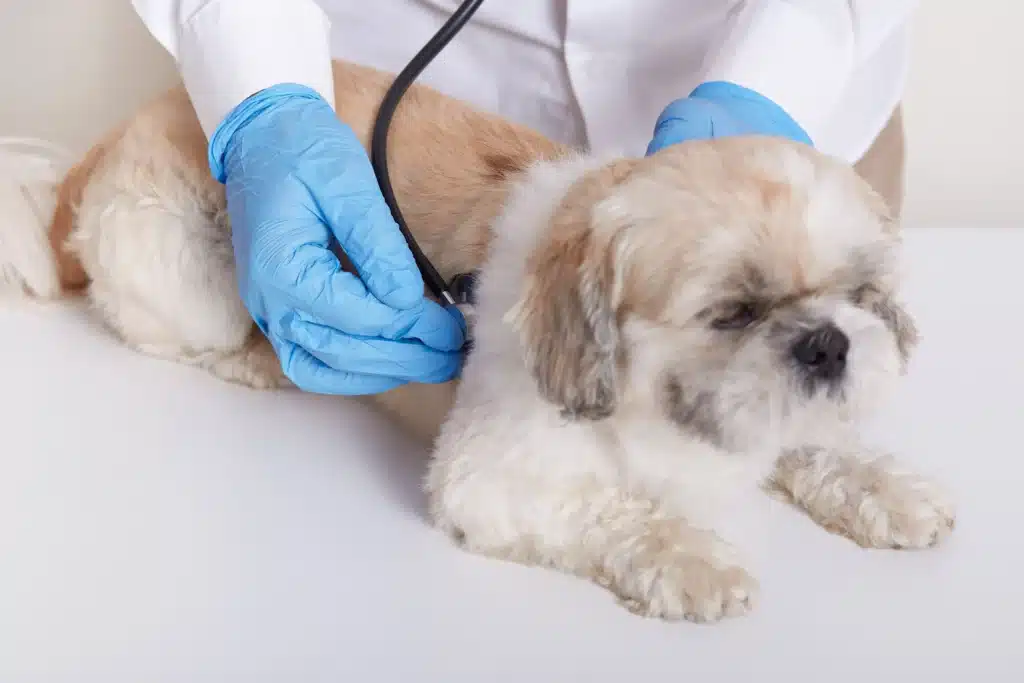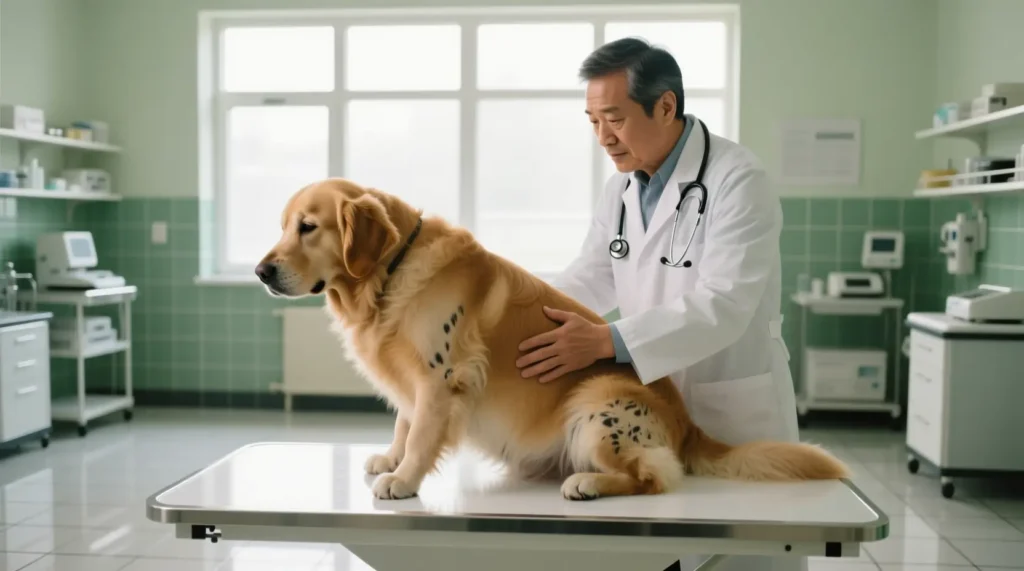Fungal diseases in dogs are easy to ignore, but they can be a serious source of discomfort, chronic illness, or even life-threatening complications if not treated. Different from bacterial or viral infections, fungal infections are often quiet infections that spread within a dog’s skin, ears, respiratory system, or internal organs before it shows obvious signs. Many of the fungi that can infect our dogs are naturally present in our environment: soil, water, or plants and even on our dog’s skin. A dog will be exposed to fungi at some point in their life. Knowing how the diseases begin, what signs to look for, and how important early diagnosis is will help dog owners minimize risk from hidden threats. Awareness of fungal infections and diseases in dogs is the first step toward prevention, prompt treatment, and improved long-term health.
Why Fungal Infections Matter in Dogs
Fungal infections in dogs are a bit of a conundrum. Unlike bacteria or viruses, fungi are exceptional at being everywhere such as soil, decaying wood, bird droppings, and yes, even from within your dog’s own skin. While some fungal infections are classified as superficial or concerning only skin or ears, others are classified as systemic, which can populate throughout the body and potentially injure lungs, bones, and even the brain. Because symptoms can be bland, or mimic other diseases, fungal infections are often underdiagnosed or diagnosed rather late, this makes awareness an imminent weapon for owners of dogs.
Common Types of Fungal Infections in Dogs
Here is an overview of the most common fungal infections in dogs, divided by superficial or superficial infection (skin, ears, & nails) or deeper (systemic) infection.
1. Superficial Fungal Infections
These infections mostly involve the skin, ears, or nails. They are uncomfortable, but if detected early, are (generally) easier to treat.
Ringworm (Dermatophytosis)
What it is: Despite its name, ringworm is actually an infection caused by a fungus (such as Microsporum canis) rather than a worm.
Signs: Circular patches of hair loss, scabbing or flaky skin, brittle nails, and sometimes redness or itchiness.
Diagnosis: Veterinarians can take hair and/or skin samples and conduct a fungal culture. A microscope slide can also be used to look for the spores.
Treatment: Medicated dips, shampoos, topical antifungals, and for more severe cases, oral antifungals. A thorough cleaning of your home is also important (vacuuming and disinfecting will help limit spread).
Is it contagious? Yes, ringworm is contagious to other pets and sometimes humans. Therefore, isolation and hygiene are very important.
Yeast Infections (Malassezia Dermatitis)
What it is: The overgrowth of yeast (Malassezia) that normally inhabits the dog’s skin.
Signs: Itching, oily or scaly skin, distinct “musty” odor, re-occurring ear infections, and darkened skin.
Causes: Commonly secondary.
Symptoms: Circular areas with absent fur, flaky or crusted skin, brittle nails, and occasionally redness or itchiness.
Diagnosis: The veterinarian may obtain hair or skin samples and perform a culture. A veterinarian may also place samples on microscope slides and observe for spores.
PetMD
Treatment: Medicated dips and shampoos, topical antifungal medicine for less severe cases, oral medication for more severe cases. Cleaning the house is also important, as vacuuming and disinfecting the house will lessen the spread or recurrence in the future.
Contagion: Yes – it can spread to other pets and even humans, thus isolation and your hygiene is paramount.
Yeast Infections (Malassezia Dermatitis)
What It Is: An overgrowth of yeast (commonly Malassezia) that normally resides in the skin of dogs, it is often seen in hot or humid environments.
Symptoms: Itching, greasy skin or scaly skin, a distinct “musty” odor, recurring ear infections, and dark patches of skin.
Causes: This is typically considered secondary allergies to something, excessive moisture, skin fold disease, or an overactive immune system that is not effectively controlling yeast.
Treatment: Mostly seen with topical antifungal treatments, medicated washes, and sometimes oral medication in the more serious and recurrent situations. Treating the underlying cause (like allergies) is important as well.
Contagion: Typically not contagious to other animals or humans.

2. Systemic (Deep) Fungal Infections
These fungal infections are more serious than the other two, as they are often deeper in the body. They often have the need for surgery.
Blastomycosis
Cause: The fungus can be Blastomyces dermatitidis which thrives in warm, moist conditions and may commonly inhabit or around damp soil and decaying timber, as well as lakes and rivers.
Transmission: Dogs can inhale the spores of the surrounding.
Symptoms: The typical symptoms of the blastomycosis encompass weight reduction, coughing, shortness of breath, lesions on the skin (mainly between the toes), pain in bones, and enlarged lymph nodes.
Diagnosis: Diagnosis of Blastomycosis is done by lab tests (cultures or cytology) and imaging (X-rays); antigen tests can be of help in some cases.
Treatment: Antifungal treatment over the long-run is necessary; popular antifungals are itraconazole, fluconazole and in complicated cases amphotericin B.
Prognosis: The prognosis of Blastomycosis is good in case of early diagnosis, but the treatment is prolonged.
Cryptococcosis
Pathogenesis: Cryptococcus species – which are commonly related to soil contamination by bird droppings, especially pigeon droppings.
Symptoms: It is commonly presented by lethargy, nasal discharge, coughing, ocular manifestations, which are progressed to neurological manifestations (such as seizures) when it disseminates.
Diagnosis: Cryptococcosis is usually diagnosed with the help of cultures, antigen tests, imaging tests, and even tissue biopsy in some cases.
Treatment: This is normally treated with long-term antifungal drugs. The treatment of cryptococcosis may take one year or more.
Challenges: This is a difficult condition because dogs might go back hence follow up is of great essence.
Coccidioidomycosis (Valley Fever)
Cause: Coccidioides species – the fungal spores are found in the sandy and dry soils, which are more prevalent in southwestern states of U.S.
Symptoms: The coccidioidomycosis symptoms are characterized by chronic cough, fever, weight loss, joint pains, lameness in case of fungi spread, eye, and bone involvement.
Diagnosis: Making a diagnosis is typically done by clinicians through blood tests, imaging studies, cell testing or tissue biopsy in rare cases.
Treatment: Oral antifungal drugs over several months can be used to treat the condition and prognosis is usually good when the condition is diagnosed early.
Phaeohyphomycosis
Cause: It is caused by a variety of pigmented fungi (family Dematiaceae) of rotting plant debris, soil, and so on.
Symptoms: Nodules of the skin, which are raised, ulceration, skin mass, or beneath the nose.
Diagnosis: Tissue: microscopic identification of fungi.
Treatment: Surgery as well as antifungal therapy is often needed. However, these infections may also be recalcitrant and may not always respond.
Candida Infection Candidiasis (Candida Infection).
Etiology: Candida albicans or other similar yeasts.
Predisposing Factors: Immunosuppression, Catheters, use of antibiotics.
Symptoms: Weakness, diarrhea, oral lesions, skin problems; It is commonly associated with other diseases.
Treatment: Depending on location and severity, topical ointments, oral or IV antifungal drugs.
Fungal Infections Diagnosis: What You (the Owner) Should Know.
Due to their similarities with allergies, bacterial infections, and other skin problems, the proper diagnosis is essential.
Veterinary Examination:
A vet will begin with a physical examination and a history – when did your dog begin to have the problem, has your dog had any exposures to soil, water, or birds?
Laboratory Tests:
Cases of skin: Hair plucks, skin scrapings, impression smears, cultures.
Systemic cases: PCR, antigen/antibody assays, biopsy, blood tests, imaging (X-rays, CT) to examine the possibility of spread.
Follow-up:
Follow-up testing (such as recurring imaging or cultures) is frequently required even when treatment has commenced to prove that the infection is clearing.
Coverage: Fighting Back
by Treatment & Management.
Fungal infections do not always respond to fast treatment – most treatments require weeks or months. This is how the treatment is handled, and how you can help your dog to deal with it:
Antifungal Medications:
Topical medications: Shampoos, skin infection sprays.
Oral antifungals: Itraconazole, fluconazole, ketoconazole, or weaker (amphotericin B) ones depending on the infection.
Infusion/surgery: To treat nasal aspergillosis, vets can put a dog under anesthesia and treat fungal masses by inserting antifungal into sinuses, or may be required to excise fungal masses.
Supportive Care:
Fluid replacement, nutritional support, pain control in case systemic disease is severe.
In the case of skin cases: clean bedding, disinfection of the environment, isolation until contagious diseases (such as ringworm) heal.
Long Duration:
A lot of systemic infections require months of treatment. In the case of cryptococcosis, the treatment can last one year or beyond.
Monitor for Recurrence:
Certain infections do not disappear, e.g. nasal aspergillosis. Vets usually suggest imaging (CT) or rhinoscopy to investigate the presence of lingering fungus.
Prevention: Mollifying the Peril.
Although prevention is not possible in all cases of the fungal infection, clever measures can be accomplished to reduce the chances:
Stay out of Dangerous Areas: When you can, keep your dog off compost piles, withering timber, bird or bat droppings, and damp soil.
Keep Clean: Keep the skin of the pet clean and in particular the dogs that have folds or floppy ears to avoid excessive growth of yeast. Wipe toys, beds and living premises.
Strengthen the Immune System: The immune system of a dog can be assisted to deal with fungi with help of a balanced, healthy diet, frequent checkups at a veterinary and managing other diseases (such as allergies).
Watch in Endemic Areas: In some cases, such as the so-called Valley Fever / Coccidioidomycosis, the illness has certain regions known to be prone to it, so discuss it with your vet to find out the risk and avoid it.
Real Stories from Dog Owners
To demonstrate how real (and terrifying) these infections may be:
One dog owner has said the treatment will last a maximum of a year of anti-fungal medication even when it appears cured there is still approximately a 10-15 percent chance that it is still there silently waiting to re-emerge (Reddit, 2025).
Other in /r/Wirehaired_pointers told about the struggle of their pup with blastomycosis: > he has overcome 90 per cent of the malady, We do not know the origin, but probably freshly turned over soil, or by lake/river (Reddit, 2025).
In more surface cases, a user wrote: > The shampoos (ketoconazole and chlorhexadine) are not working, in my case, It is possible, there is also a mixed infection of bacteria as well.
These real-life accounts demonstrate how difficult, time-consuming and emotionally demanding treatment can be but recovery can take place with the proper care and dedication.
- Disaster Preparation: Indications to See the Vet.
- You should pay a visit to a veterinarian immediately when you notice:
- Itchiness or crusts that do not disappear or improve or bald patches.
- Noseal run-off, particularly bloody or foul.
- Cough, loss of weight, tiredness or difficulty in breathing.
- Skin lumps Skin draining tracts or masses.
- Such neurological symptoms as seizures, head-tilting, or coordination loss.
- The outcomes of early diagnosis are dramatic, especially with a systemic fungal disease.
| Fungal Disease | Cause / Source | Key Symptoms | Diagnosis | Treatment | References |
| Ringworm (Dermatophytosis) | Microsporum canis, Trichophyton species | Circular hair loss, scaly or crusty skin, brittle nails, redness | Fungal culture, Wood’s lamp exam, skin scraping | Medicated shampoos, dips, topical & oral antifungals; environmental cleaning | PetMD (2023); Noble Vet Clinic (2024) |
| Yeast Dermatitis (Malassezia) | Overgrowth of Malassezia pachydermatis (normal skin yeast) | Itching, greasy skin, odor, ear infections, darkened thick skin | Skin cytology, ear swabs | Antifungal shampoos, wipes, oral antifungals; treat underlying cause | PetMD (2023); Noble Vet Clinic (2024) |
| Aspergillosis (Nasal/Systemic) | Aspergillus fumigatus found in soil, decaying matter | Nasal discharge, sneezing, facial pain, nosebleeds; systemic cases affect organs | Rhinoscopy, CT scan, fungal culture | Topical sinus infusion, oral antifungals, surgery if needed | MSD Vet Manual (2024); PetMD (2023) |
| Blastomycosis | Blastomyces dermatitidis in moist soil, lakes, forests | Coughing, breathing issues, skin lesions, weight loss, eye inflammation | Cytology, antigen testing, chest X-ray | Long-term itraconazole or fluconazole; severe cases: amphotericin B | Vet Manual (MSD, 2024); PetMD (2023) |
| Cryptococcosis | Cryptococcus neoformans from bird droppings (especially pigeons) | Nasal swelling, discharge, eye issues, neurological signs | Cytology, biopsy, antigen blood test | Long-term antifungals (6–12+ months) | PetMD (2023); MSD Vet Manual (2024) |
| Coccidioidomycosis (Valley Fever) | Coccidioides spp., dry sandy soil in arid regions | Chronic cough, fever, joint pain, lameness, weight loss | Blood tests, imaging, biopsy | Fluconazole or itraconazole for several months | MSD Vet Manual (2024); PetMD (2023) |
| Phaeohyphomycosis | Dark-pigmented fungi (Dematiaceae family) in soil & plants | Skin nodules, abscesses, nasal masses | Histopathology, fungal culture | Surgery + antifungal drugs | MSD Vet Manual (2024) |
| Candidiasis | Candida albicans (overgrowth in GI, oral, or skin) | Oral plaques, diarrhea, skin irritation, immune-related symptoms | Culture, cytology | Topical or systemic antifungals | MSD Vet Manual (2024) |
Final Thoughts
Fungal diseases in dogs may not occur frequently as other ailments; however, they are some of the most challenging for owners. Treatment combines the knowledge of a veterinarian, observation from the owner, and sometimes, long-lasting treatment. The good news is that several fungal diseases are treatable, especially if they are detected in an early stage.
By learning more about the risks, recognizing the signs, and being proactive, you can protect your furry companion from these opportunistic parasites.
References
MSD Veterinary Manual (2024) Fungal infections in dogs. Available at: https://www.msdvetmanual.com/dog-owners/disorders-affecting-multiple-body-systems-of-dogs/fungal-infections-in-dogs
Noble Vet Clinic (2024) Dog fungal infection: types, symptoms, and treatment. Available at: https://noblevetclinic.com/blog/dog-fungal-infection-types-symptoms-and-treatment
PetMD (2023) Aspergillosis in dogs. Available at: https://www.petmd.com/dog/conditions/respiratory/c_multi_aspergillosis .
PetMD (2023) Identifying and treating fungal infections in dogs. Available at: https://www.petmd.com/dog/general-health/identifying-and-treating-fungal-infections-dogs
PetMD (2023) Yeast dermatitis (Malassezia) in dogs. Available at: https://www.petmd.com/dog/conditions/skin/c_dg_malassezia_dermatitis
The Pet Vet (2023) Fungal infections in dogs – diagnosis & treatment. Available at: https://www.thepetvet.co.uk/advice/fungal-infections-in-dogs.
Wakefield Pet Vet (2024) Dog skin fungus and yeast infections. Available at: https://wakefieldpetvet.com/dog-fungal-yeast-infections.
Reddit.com. (2025) Reddit – The heart of the internet. [online] Available at: https://www.reddit.com/r/Wirehaired_pointers/comments/1ljvw75/1yo_gwp [Accessed 16 Nov. 2025].


